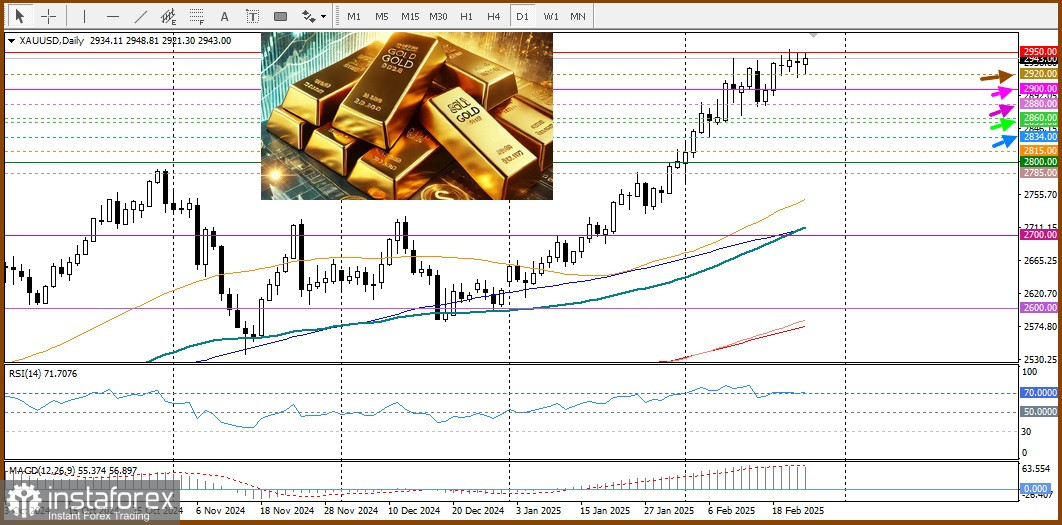
Gold remains confined within a multi-day trading range, struggling to reach its historical high. Investor concerns over a potential global trade war triggered by tariffs imposed by U.S. President Donald Trump are bolstering gold's status as a safe-haven asset. Additionally, fears that protectionist policies could fuel inflationary pressures are reinforcing gold's role as a hedge against rising prices.
Meanwhile, worries about U.S. consumer health and economic growth prospects are weighing on the U.S. dollar, pushing it toward levels last seen on December 10. Combined with geopolitical tensions, these factors are influencing precious metal prices. However, expectations that the Federal Reserve will maintain high interest rates for an extended period are limiting gold's upward potential.
From a technical standpoint, the Relative Strength Index (RSI) on the daily chart remains above the 70 level, indicating overbought conditions. This is deterring traders from initiating new bullish positions, reinforcing range-bound price movements. However, a break above $2,950 and the historical high near $2,955 would be seen as a new bullish trigger, allowing XAU/USD to extend its two-month-long uptrend.
On a pullback, buyers are expected to emerge around the $2,920–2,915 zone. Below this, further support lies at $2,900 and $2,880. A decisive break below these levels could accelerate a decline toward the $2,860–2,855 range, followed by a move toward $2,834 and ultimately the key psychological level of $2,800.





















